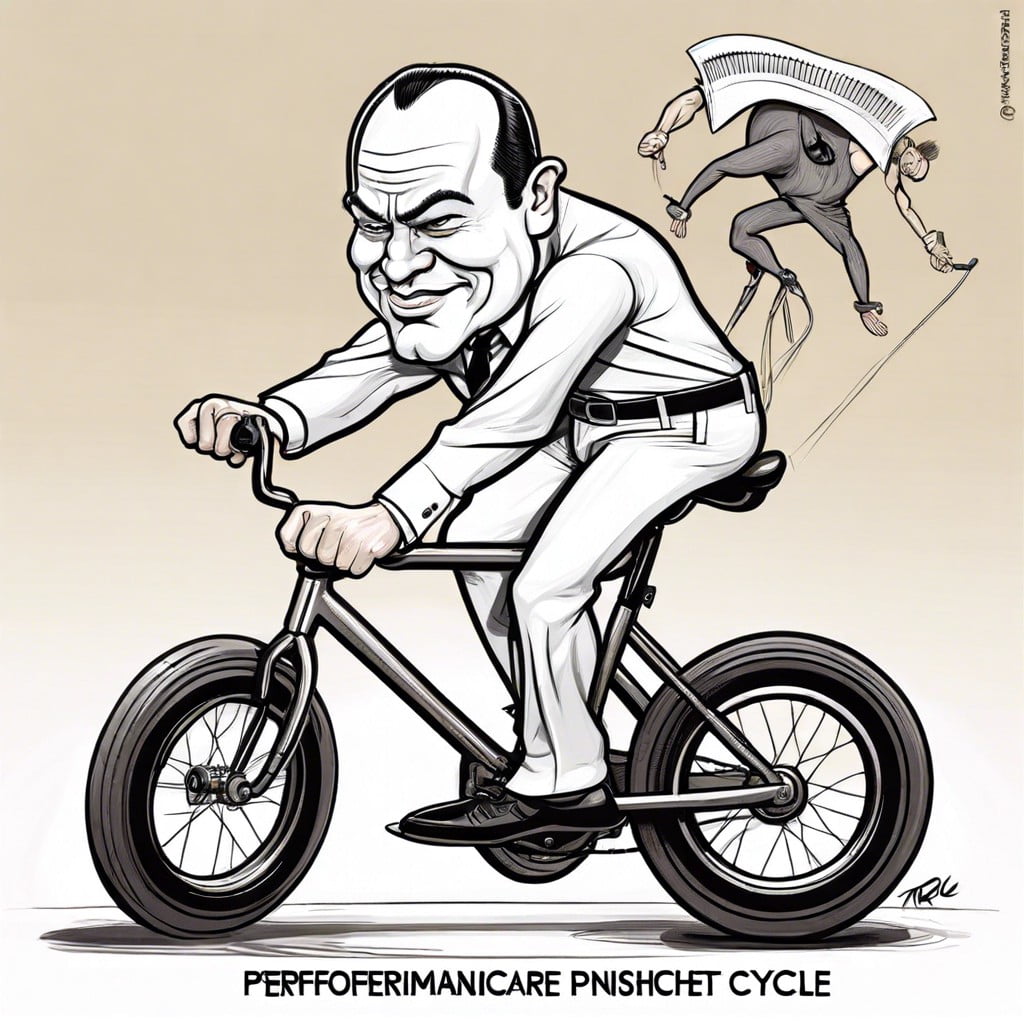Performance punishment occurs when employees are given more work or responsibility as a result of their high performance, leading to burnout and decreased motivation, and this article will uncover why it happens and how to avoid it.
Key takeaways:
- Performance punishment leads to burnout and decreased motivation.
- Overworking negatively impacts productivity, health, morale, and creativity.
- Quiet quitting is a response to being overburdened with more work.
- Investing in employee wellbeing improves productivity and engagement.
- Empower employees through recognition, growth opportunities, clear goals, work-life balance, autonomy, and feedback.
Understanding the Performance Punishment Cycle

Picture this: Jane is a top performer at her company. She’s always hitting her targets, often exceeding them with style. Her reward? More work. A lot more work. Ever heard the phrase, “If you want something done, give it to a busy person?” Jane feels it every day. This phenomenon is what we call “performance punishment.” It’s like giving someone extra homework for getting an A+.
This cycle can lead to burnout and resentment. High performers get overloaded, while low performers coast along. It’s like everyone’s favorite sitcom where hardworking characters keep getting hilariously dumped with ‘group projects.’
Managers might think they’re reaffirming trust in their star employees by piling on the responsibilities. But in reality, it’s a sneaky form of punishment for being good at your job. So, instead of driving success, it’s driving attrition rates sky high.
Recognizing this pattern is crucial. It’s not just unfair; it’s unsustainable. It’s like trying to drive a car forever without refueling. Sooner or later, the tank hits empty.
Recognize the Real Effects of Overworking
All work and no play makes Jack not only dull but also burnt out. Overworking doesn’t just increase short-term stress; it has serious long-term impacts. Here’s what happens when you’re on the hamster wheel of constant hustle:
First, productivity plummets. Burnt-out brains can’t focus. Quality decreases, mistakes multiply, and deadlines are missed.
Second, health takes a nosedive. Chronic stress leads to sleep problems, weakened immune systems, and even heart issues. Stress is like the office coffee machine that never gets cleaned—a ticking time bomb.
Then, there’s plummeting morale. Overworked employees feel undervalued, leading to disengagement and higher turnover rates. The office starts resembling a scene from a zombie apocalypse movie, just with more PowerPoint presentations.
Lastly, it stifles creativity. Exhaustion and innovation mix like oil and water. Fresh ideas won’t flow when minds are perpetually tired.
Recognizing these effects is crucial. It’s important to hit pause, take breaks, and maintain a healthy work-life balance. It’s not just about working harder but smarter.
Quiet Quitting: A Reaction to Performance Punishment
Imagine this: you’re giving 110%, but instead of a pat on the back, you’re handed more work. Eventually, you’re done with the hamster wheel. Enter quiet quitting—a trendy term for doing exactly what’s outlined in your job description and nothing more.
Quiet quitting can be a direct response to being overburdened. Here’s why it happens:
More Responsibility, Same Pay: You’ve been hustling, but your paycheck hasn’t developed any hustle of its own.
Burnout: Endless expectations lead to exhaustion, making you want to curl up with a Netflix series instead of tackling extra tasks.
Lack of Recognition: When your efforts go unnoticed, your motivation can take an unannounced vacation.
By sticking to the essentials and not overextending, employees are regaining control and managing their work-life blues.
Invest in Employee Wellbeing
Let’s face it – burnt-out employees aren’t winning any productivity awards. Investing in their wellbeing is like giving your garden some TLC; everything just blooms better.
First off, consider flexible work hours. Allowing employees to juggle personal commitments without the Cirque du Soleil balancing act can reduce stress and increase productivity.
Encourage regular breaks. Turns out, humans aren’t robots. Shocking, I know. Short, frequent breaks can lead to a more focused and creative workforce.
Wellness programs are a win-win. Yoga classes, mental health days, or even just free fruit in the break room can make a world of difference.
Professional development shouldn’t be a carrot on a stick. Offering training, upskilling, and career advancement opportunities keeps employees engaged and looking forward to their future with the company – not someone else’s.
Lastly, open communication channels. Creating a safe space for employees to voice concerns can help nip stressors in the bud before they bloom into productivity killers.
Performance Empowerment Over Performance Punishment
Let’s pivot from punishment to empowerment! Instead of bogging down top performers with extra work, how about nurturing their potential? Here’s how:
– Celebrate Wins: Recognize and reward accomplishments. No one ever complained about too much praise, right?
– Offer Growth Opportunities: Provide training and development. Imagine unlocking their superhero powers—minus the cape.
– Set Clear Goals: Establish clear, achievable objectives. Think of it as giving your team a treasure map, not vague directions.
– Encourage Balance: Promote work-life balance. Yes, even Superman needs a day off from saving Metropolis.
– Give Autonomy: Trust your employees to manage their tasks. Nobody likes a micromanager; let them fly solo when they can.
– Solicit Feedback: Ask for and act on employee input. It’s like getting a cheat sheet directly from the people in the know.
Empowering employees can transform the workplace, fostering both productivity and satisfaction.